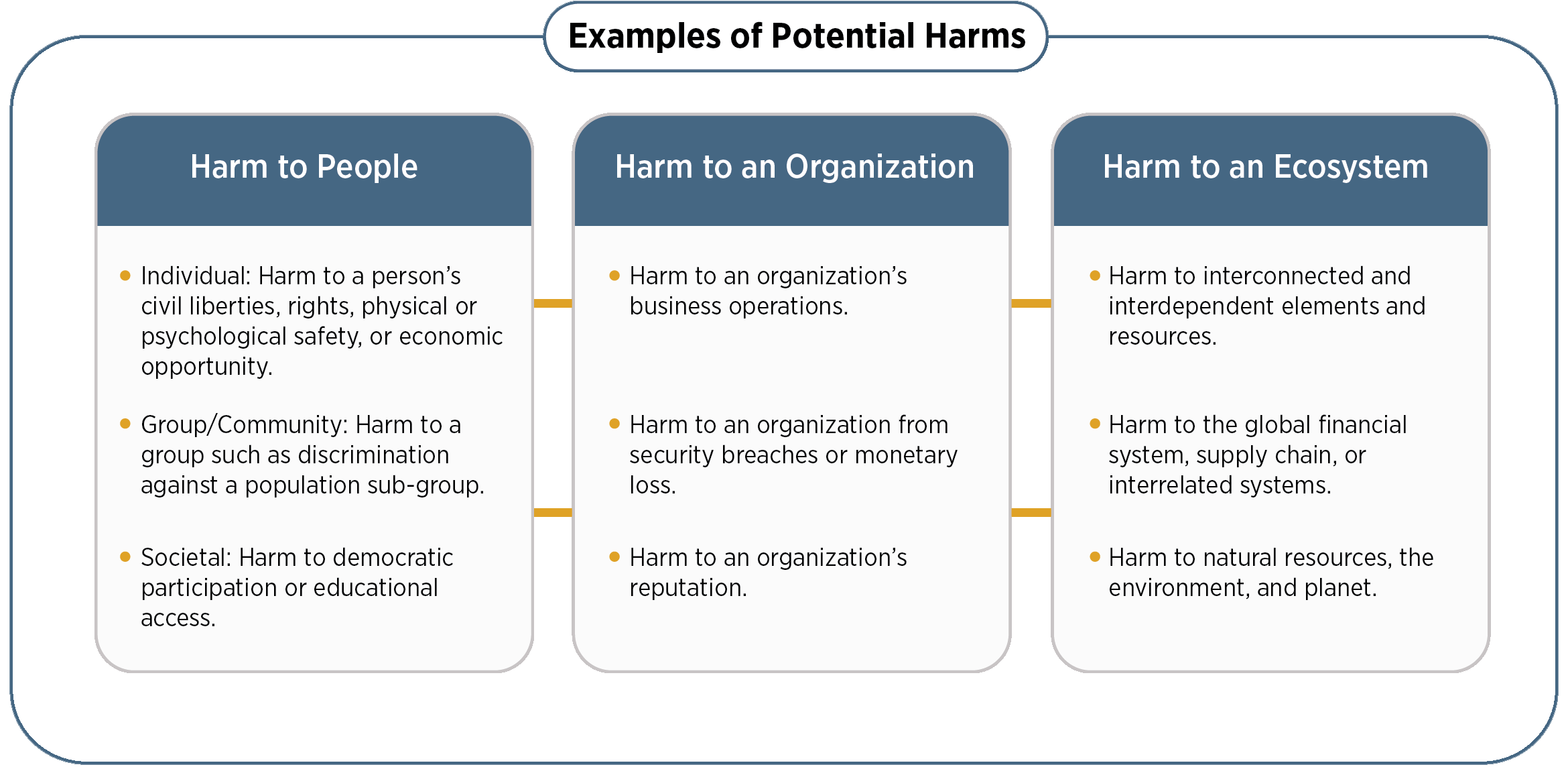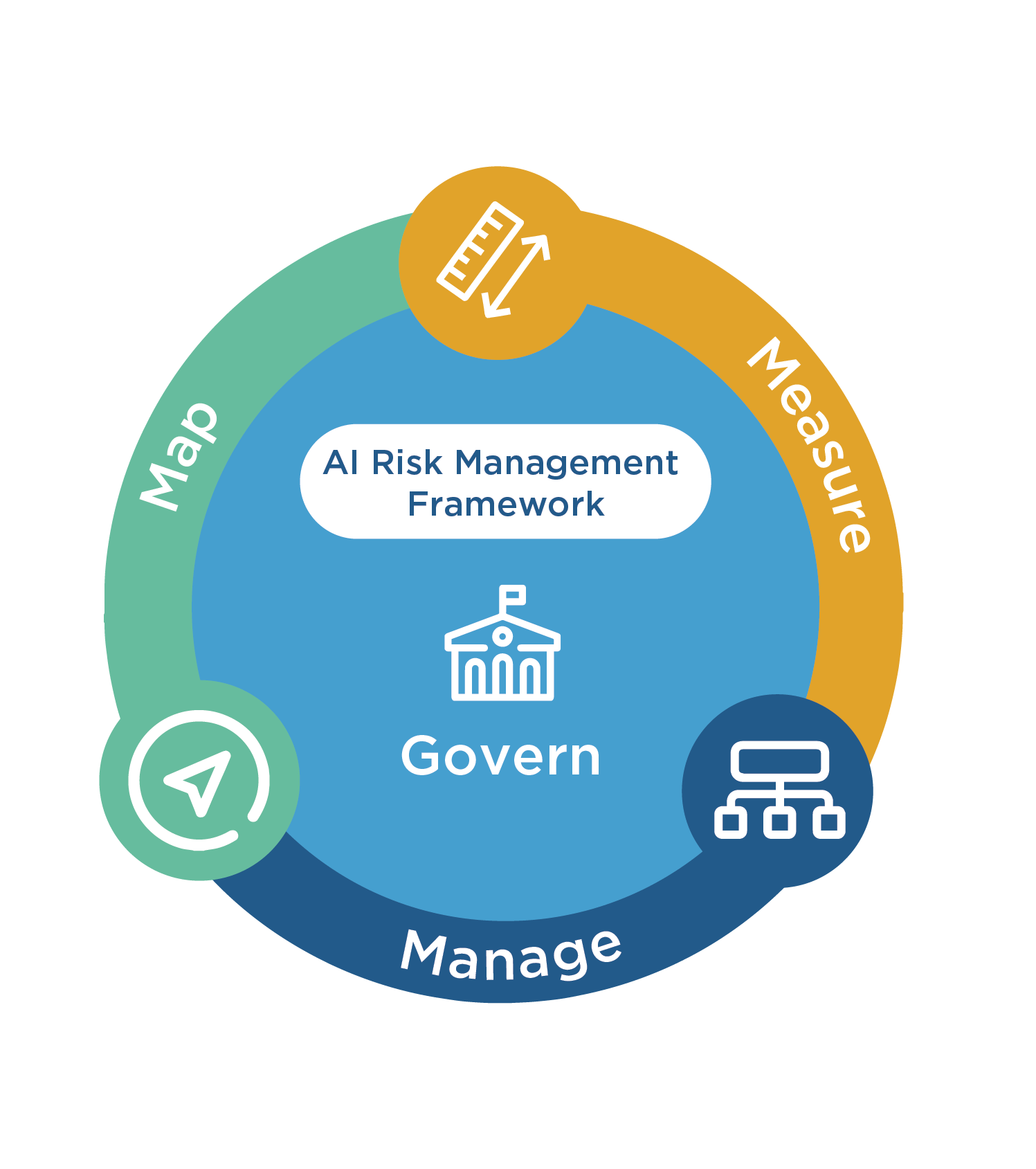Artificial intelligence is rapidly permeating every aspect of our lives, from the virtual assistants that manage our schedules to the recommendation engines that curate our entertainment. While AI offers incredible capabilities, it also introduces a realm of risks that cannot be ignored.
Enter the NIST AI Risk Management Framework – a comprehensive guide to navigating the intricate landscape of AI risk management.
What exactly is the NIST AI Risk Management Framework?
Simply put, it's a robust framework designed to equip organizations with the tools to identify, assess, and mitigate risks associated with the development, deployment, and use of AI systems. Unveiled in January 2023, this framework provides a structured approach to managing AI risks throughout the AI lifecycle, centered around four core functions: Govern, Map, Measure, and Manage. Think of it as a trusted companion on your journey through the AI risk management terrain.
Potential Harms: Why is AI risk management so crucial?
AI systems have the potential to pose significant threats to individuals, organizations, and society as a whole. These risks can manifest in various forms, from privacy and civil liberties infringements to financial losses, reputational damage, and even environmental impacts.

Effective AI risk management isn't just a nice-to-have; it's an imperative for ensuring the responsible and trustworthy development and use of AI technologies while fostering continued innovation. Let’s take a closer look into the Core Functions of AI risk management.

The Core Functions:
-
Govern: This function lays the foundation for a robust AI risk management culture within your organization. It outlines the processes, policies, and practices necessary to anticipate, identify, and manage the risks posed by AI systems. Think of it as the cornerstone upon which your AI risk management efforts will be built.
-
Map: Here's where you gain a deep understanding of your AI system's context and potential risks. This function encourages gathering insights from various stakeholders to prevent negative risks, develop more trustworthy AI systems, and make informed decisions about whether to proceed with design, development, or deployment.
-
Measure: Time to roll up your sleeves and get quantitative, qualitative, or take a mixed-method approach. The Measure function employs a range of tools and methodologies to analyze, assess, benchmark, and monitor AI risks and their impacts. This includes software testing, performance evaluation against benchmarks, and comprehensive documentation of results.
-
Manage: Time to put it into practice. The Manage function focuses on prioritizing identified risks based on their potential impact and taking decisive action. It involves allocating resources, implementing risk treatment plans, responding to and recovering from incidents, and communicating about AI risk-related events.
The NIST AI RMF emphasizes that AI risk management is an iterative and continuous process, much like the NIST Risk Management Framework for cybersecurity. It encourages collaboration and the incorporation of multiple perspectives from various stakeholders, including external AI actors, to gain a holistic understanding of AI risks.
For more information on risk management, you can head over to the NIST AI Resource Center
Check out Part 2, where we'll dive into the challenges of AI risk management and explore how the NIST AI RMF can empower you to navigate these complexities with confidence.
